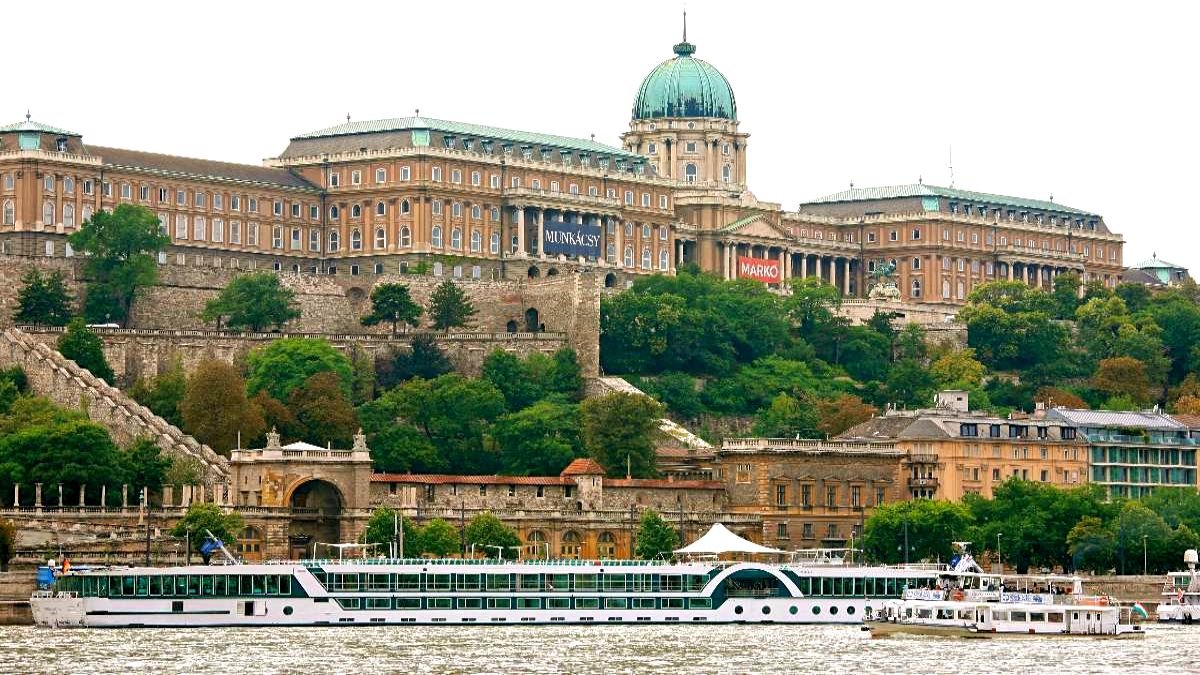Overview
Hungary, a Central European gem, offers a fascinating blend of historical landmarks, charming towns, natural wonders, and vibrant cityscapes.
Known for its architectural beauty, thermal spas, and rich cultural heritage, Hungary has something for every traveler.
From the thermal baths of Budapest to the picturesque Szentendre town, each destination offers a unique window into Hungary’s rich heritage and welcoming culture.
This blog takes you through the best 15 tourist attractions in Hungary, each showcasing the country’s unique history, culture, and scenic beauty.
Table of Contents
1. Buda Castle, Budapest
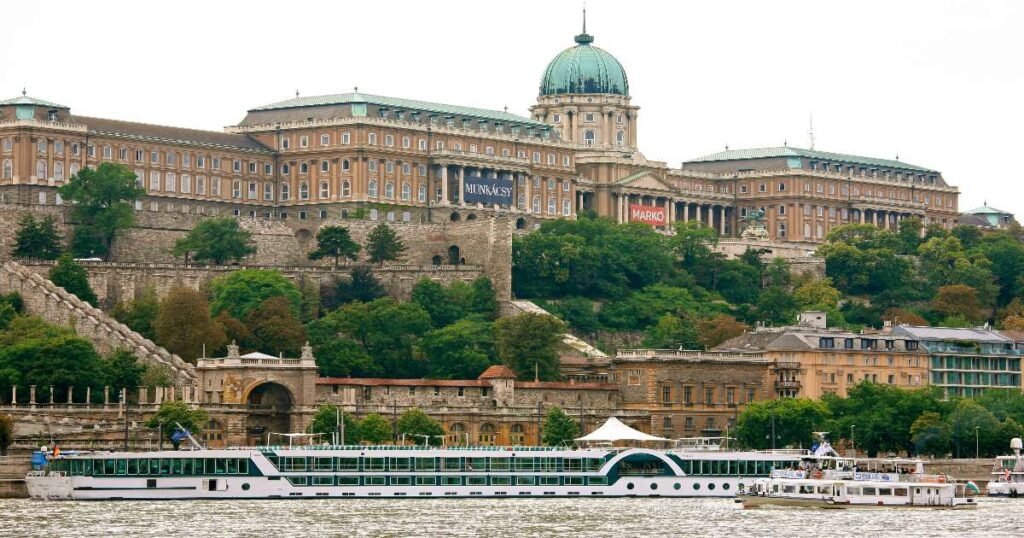
Perched on Castle Hill in Budapest, Buda Castle is a grand palace complex that has long been the residence of Hungarian kings.
Historical and Cultural Significance: Buda Castle, a UNESCO World Heritage site, symbolizes Hungary’s medieval history and serves as an important cultural hub, housing the Hungarian National Gallery and Budapest History Museum.
Unique Features: Don’t miss the panoramic views over the Danube River and Pest from Fisherman’s Bastion nearby.
Best Time to Visit: April to October for outdoor explorations.
Travel Tips:
- Transportation: Easily accessible by the Castle Hill Funicular or walking from the Chain Bridge.
- Accommodations: Stay in Budapest’s central district for quick access.
- Local Customs: Be mindful of Buda Castle’s historical significance; locals see it as a symbol of their heritage.
2. Parliament Building, Budapest
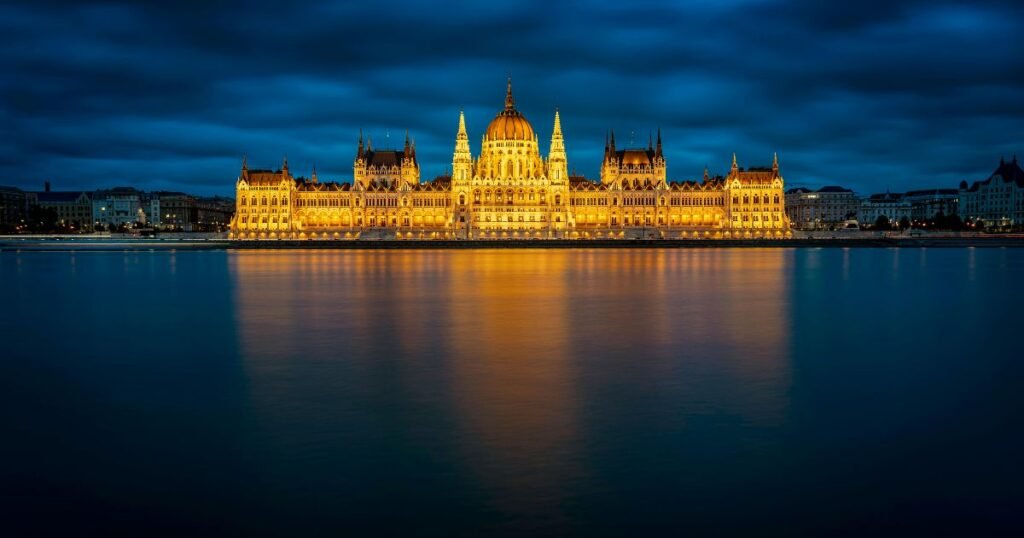
The Hungarian Parliament Building, a striking Gothic Revival structure on the banks of the Danube, is one of Budapest’s most recognizable landmarks.
Historical and Cultural Significance: Completed in 1904, it is a symbol of Hungarian democracy and national pride. The building houses Hungary’s Crown Jewels and other important artifacts.
Unique Features: The architectural details, including 691 rooms and a 96-meter dome, showcase intricate Neo-Gothic design.
Best Time to Visit: Year-round; consider an evening visit for stunning lighting.
Travel Tips:
- Transportation: Easily reachable by metro, tram, and walking.
- Accommodations: Staying in central Budapest offers close access.
- Local Customs: Guided tours are available, and booking in advance is recommended due to its popularity.
3. Lake Balaton
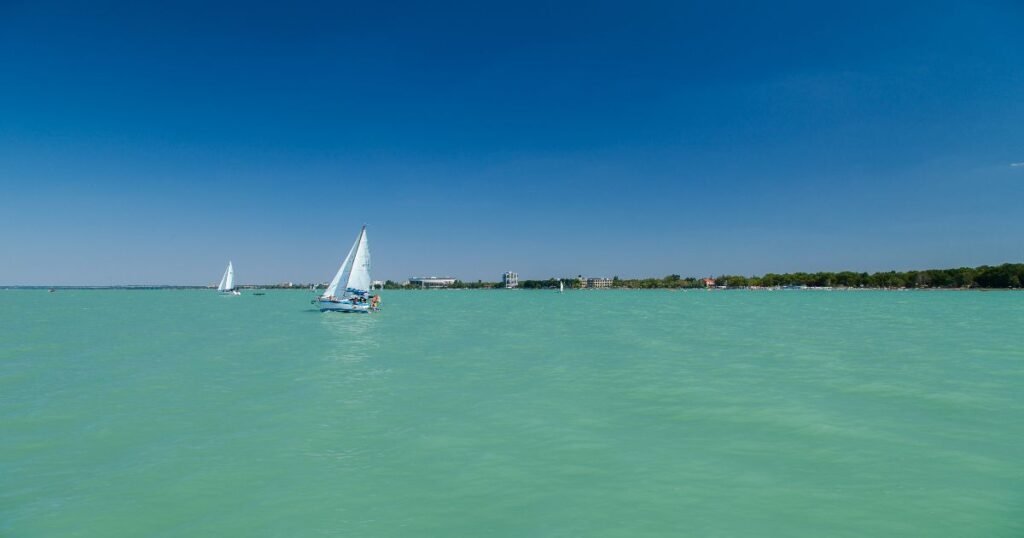
Known as the “Hungarian Sea,” Lake Balaton is Central Europe’s largest lake, offering sandy beaches, thermal baths, and scenic resorts.
Historical and Cultural Significance: Lake Balaton has long been a popular holiday destination for Hungarians, blending natural beauty with a lively resort culture.
Unique Features: Popular activities include sailing, swimming, wine-tasting tours in Balatonfüred, and exploring volcanic hills.
Best Time to Visit: June to September for warm weather.
Travel Tips:
- Transportation: Accessible by train from Budapest; car rental is recommended for full exploration.
- Accommodations: Lakefront resorts and guesthouses in Balatonfüred or Siófok.
- Local Customs: Respect local property around private lake areas, and savor local wines from vineyards in the region.
4. Heroes’ Square, Budapest
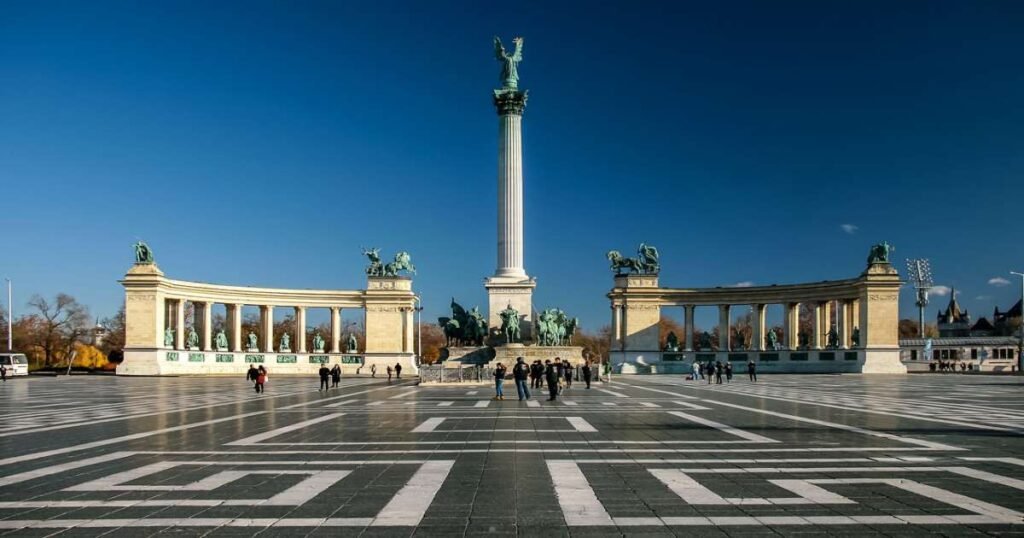
Heroes’ Square is a grand plaza and one of Budapest’s most important national monuments, dedicated to Hungarian leaders and freedom fighters.
Historical and Cultural Significance: Built in 1896, the square commemorates Hungary’s Millennium celebrations, marking 1,000 years since the arrival of the Magyar tribes.
Unique Features: The central Millennium Monument is surrounded by statues of historical figures, including the Seven Chieftains of the Magyars.
Best Time to Visit: Spring and summer, especially in the evening for less crowd.
Travel Tips:
- Transportation: Reachable by metro (Line 1).
- Accommodations: Nearby hotels in central Budapest are ideal.
- Local Customs: It’s a site of pride and history, so treat monuments with respect.
5. Széchenyi Thermal Bath
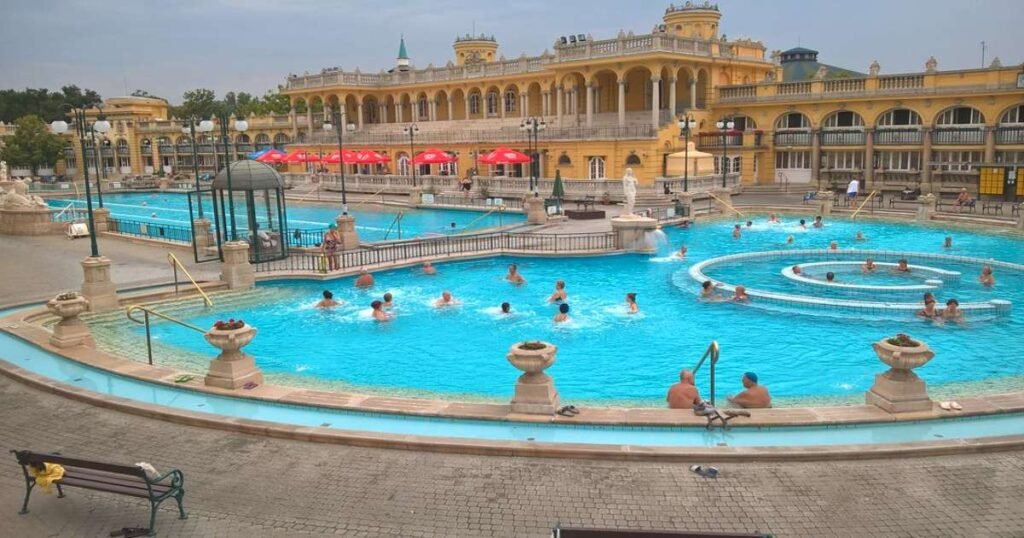
The Széchenyi Thermal Bath, located in Budapest’s City Park, is one of Europe’s largest and most famous spa complexes.
Historical and Cultural Significance: Opened in 1913, it’s a notable example of Hungary’s thermal bath culture, rooted in Roman and Turkish traditions.
Unique Features: The bath complex offers indoor and outdoor pools, saunas, and massage treatments.
Best Time to Visit: Year-round; winter offers a unique experience in the outdoor hot pools.
Travel Tips:
- Transportation: Accessible by metro (Line 1).
- Accommodations: Stay in Budapest City Park for easy spa access.
- Local Customs: Bring a swimsuit, towel, and flip-flops; advance booking is recommended.
6. Danube Bend
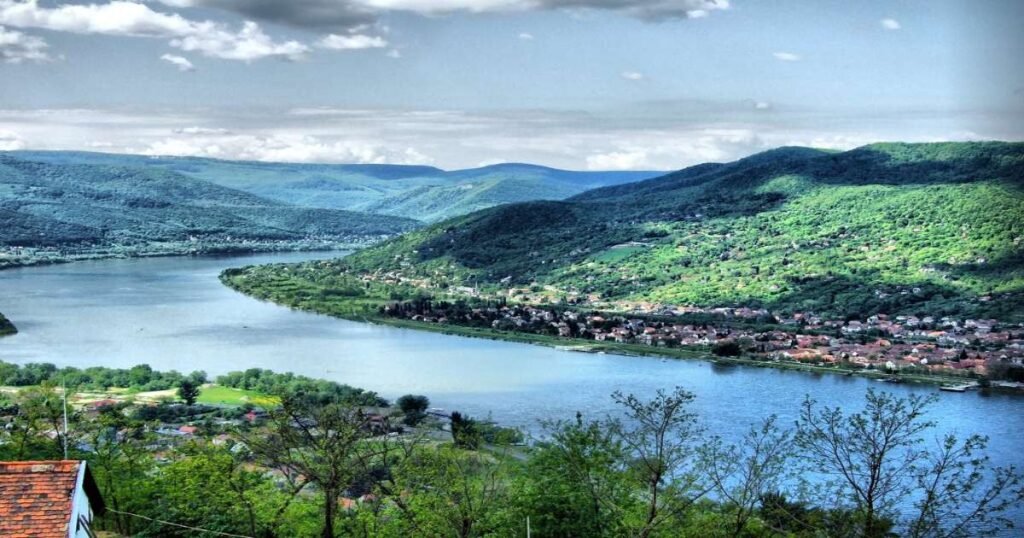
The Danube Bend, just north of Budapest, is a scenic curve of the Danube River, lined with charming towns and natural beauty.
Historical and Cultural Significance: The area has been significant for centuries, especially the town of Visegrád, which was a royal seat and military stronghold.
Unique Features: Popular stops include Visegrád Castle, Esztergom Basilica, and the artistic town of Szentendre.
Best Time to Visit: Late spring to early autumn.
Travel Tips:
- Transportation: Reachable by car, train, or river cruise from Budapest.
- Accommodations: Stay in Szentendre for a quaint experience or Visegrád for easy access to historical sites.
- Local Customs: Hiking is popular in the area; bring suitable footwear and respect local trails.
7. Esztergom Basilica
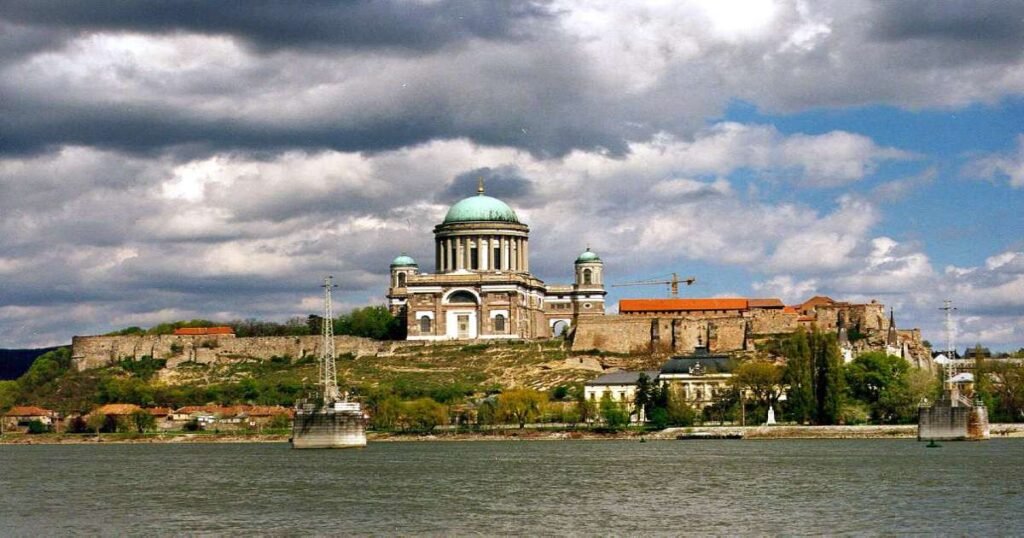
Esztergom Basilica, Hungary’s largest church, is a stunning neoclassical cathedral overlooking the Danube River.
Historical and Cultural Significance: Built in the 19th century, it is the center of Hungary’s Catholic Church and a historical site linked to St. Stephen, Hungary’s first king.
Unique Features: The cathedral’s massive dome, altars, and beautiful frescoes make it a masterpiece of religious architecture.
Best Time to Visit: May to October.
Travel Tips:
- Transportation: Accessible by train from Budapest.
- Accommodations: Esztergom offers a selection of small hotels and guesthouses.
- Local Customs: Dress modestly inside the basilica, as it remains an active religious site.
8. Hortobágy National Park
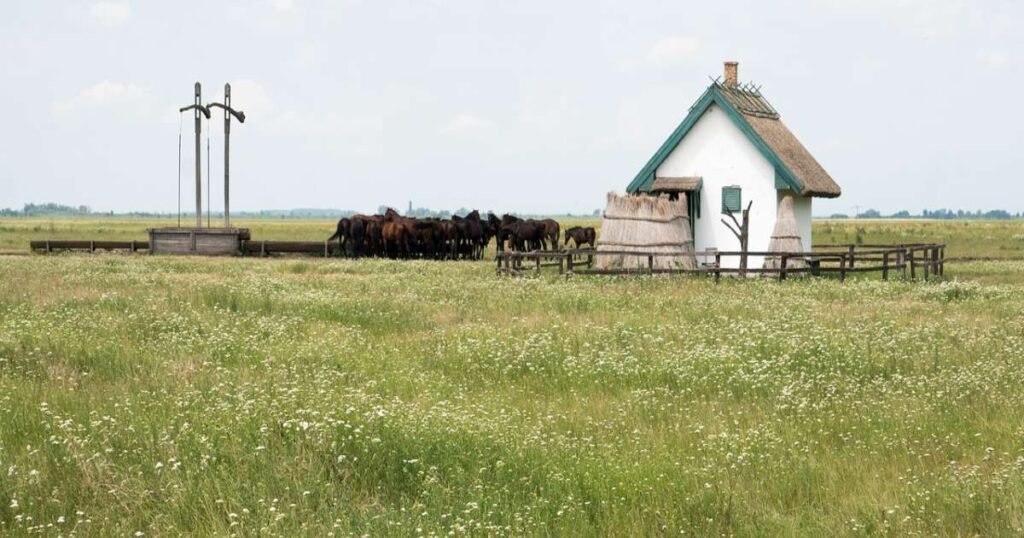
Hortobágy National Park, a UNESCO World Heritage site, is Hungary’s largest protected area, showcasing the country’s traditional pastoral culture.
Historical and Cultural Significance: The park preserves Hungary’s unique “puszta” landscape, home to herdsmen, ancient breeds, and diverse wildlife.
Unique Features: Attractions include the Nine-Hole Bridge, the traditional herdsmen shows, and bird-watching.
Best Time to Visit: Late spring to early autumn for outdoor activities.
Travel Tips:
- Transportation: Accessible by car or guided tour from Debrecen.
- Accommodations: Lodges and traditional inns in nearby towns.
- Local Customs: The herdsmen’s lifestyle is unique; join organized tours to learn and respect their customs.
9. Eger Castle
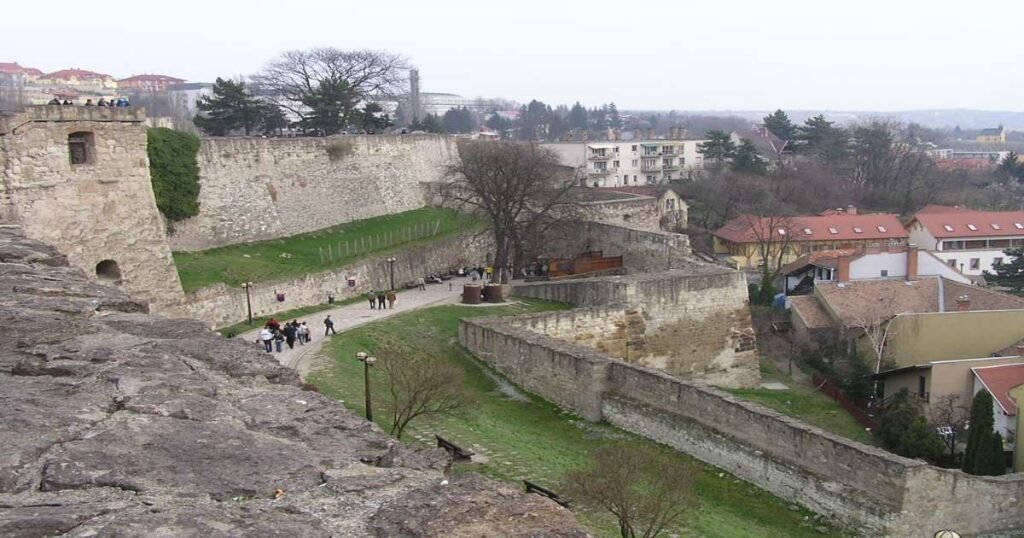
Eger Castle, a medieval fortress in northeastern Hungary, is famous for its role in the 1552 Siege of Eger, where locals successfully defended against Ottoman forces.
Historical and Cultural Significance: Eger Castle has become a symbol of Hungarian resilience and pride, celebrated in Hungarian literature and folklore.
Unique Features: Explore the castle’s museum, dungeons, and historical reenactments of the famous siege.
Best Time to Visit: May to October.
Travel Tips:
- Transportation: Accessible by train or bus from Budapest.
- Accommodations: Eger has a variety of hotels and guesthouses.
- Local Customs: Wine from Eger (Bull’s Blood) is a must-try; sampling local wine is part of the experience.
10. Pécs Cathedral
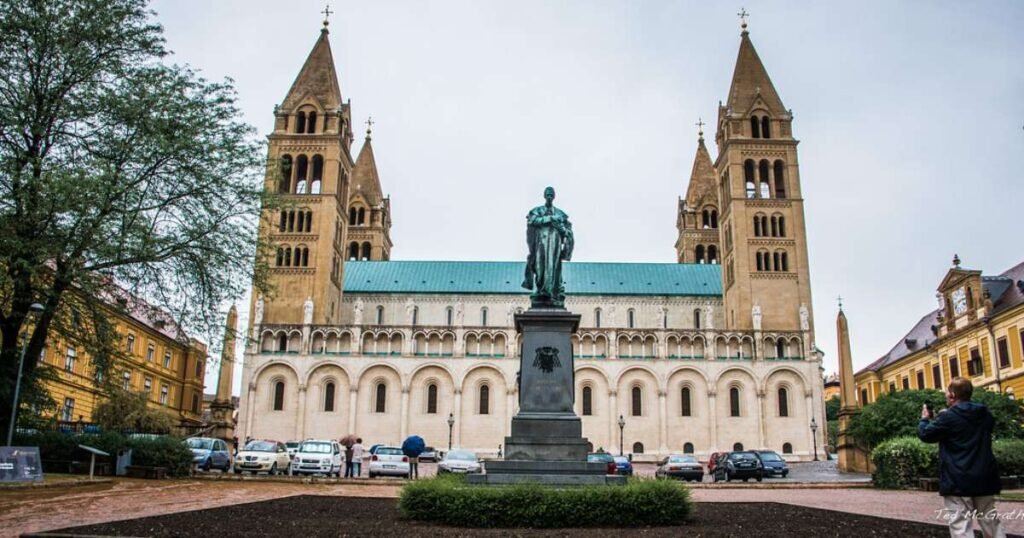
Pécs Cathedral, in southern Hungary, is a magnificent Romanesque cathedral with a history dating back over 1,000 years.
Historical and Cultural Significance: Established in the 11th century, it has undergone various architectural transformations, representing Hungary’s diverse cultural heritage.
Unique Features: The cathedral’s frescoes, crypt, and tall spires add to its historic charm.
Best Time to Visit: Year-round.
Travel Tips:
- Transportation: Reachable by train from Budapest.
- Accommodations: Stay in Pécs for easy access to attractions.
- Local Customs: Modest attire is encouraged; the cathedral remains an active place of worship.
11. Szentendre
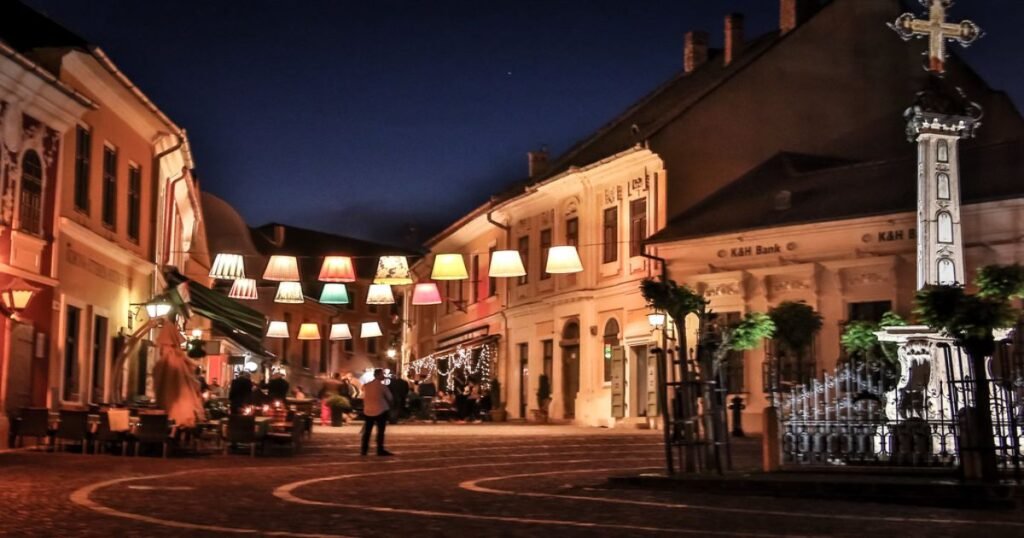
Szentendre, a picturesque town located near Budapest, is known for its charming cobblestone streets, vibrant art scene, and rich cultural heritage.
Historical and Cultural Significance: Founded in Roman times, Szentendre became an artistic hub in the 20th century, attracting many artists, writers, and creators who were drawn to its scenic beauty and proximity to Budapest.
Unique Features: The town boasts Baroque architecture, colorful houses, and numerous museums, including the Open-Air Ethnographic Museum and the Serbian Orthodox Church, showcasing its multicultural influences.
Best Time to Visit: Spring and summer for pleasant weather and outdoor festivals.
Travel Tips:
- Transportation: Easily accessible by train or boat from Budapest, about a 30-minute journey.
- Accommodations: Choose from charming guesthouses or boutique hotels for a cozy stay in the heart of the town.
- Local Customs: Enjoy leisurely strolls, but remember to respect the local pace—Szentendre has a relaxed, artistic vibe.
12. Visegrád Castle
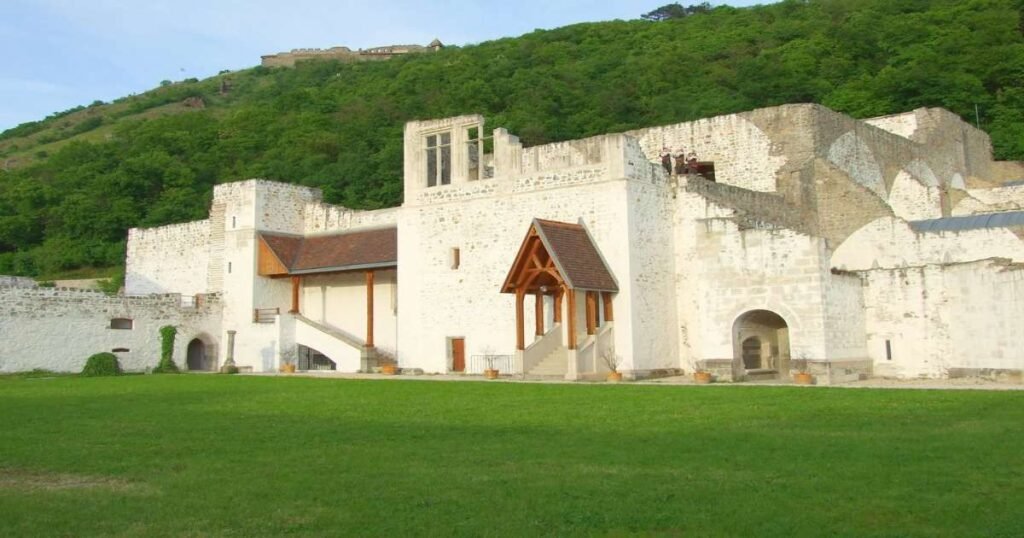
The medieval Visegrád Castle, perched above the Danube River, offers breathtaking views and a glimpse into Hungary’s royal past.
Historical and Cultural Significance: Visegrád served as a royal residence in the 14th century and was an important strategic fortification during the Middle Ages. The castle was home to significant historical events, including the royal meeting that led to the formation of the Visegrád Group in 1335.
Unique Features: Explore the castle ruins, enjoy panoramic views of the Danube Bend, and witness historical reenactments and festivals held on the grounds.
Best Time to Visit: Late spring to early autumn for optimal weather and outdoor events.
Travel Tips:
- Transportation: Accessible by boat, car, or train from Budapest.
- Accommodations: Stay in nearby Visegrád or Szentendre for a quaint experience.
- Local Customs: The area is a popular picnic spot for locals, so bring a packed lunch to enjoy the scenery.
13. Szeged
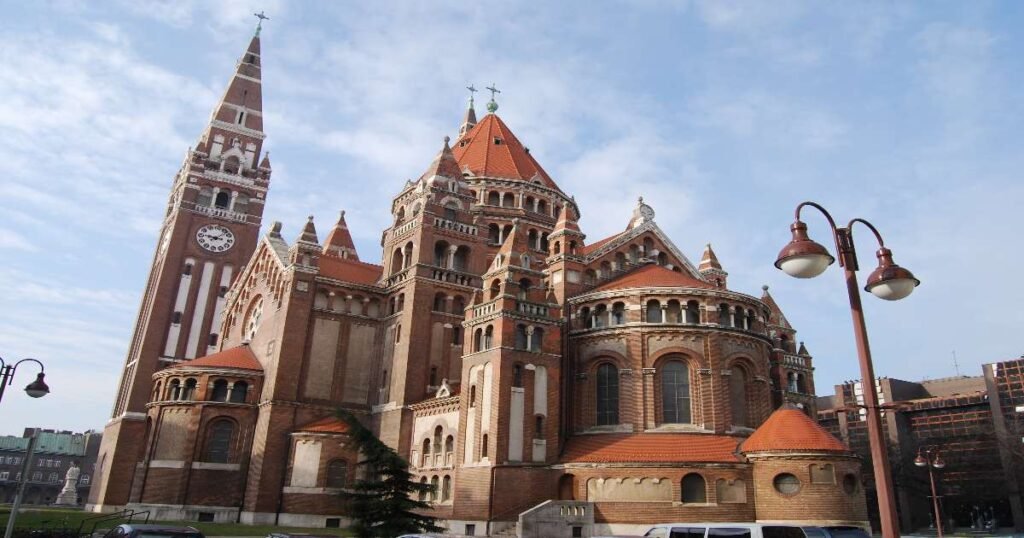
Szeged, known as the “City of Sunshine,” is Hungary’s third-largest city, celebrated for its art nouveau architecture, cultural festivals, and vibrant university life.
Historical and Cultural Significance: Szeged has a rich cultural heritage, with significant contributions to Hungarian arts and sciences. Rebuilt in the early 20th century after a devastating flood, Szeged showcases unique art nouveau architecture and hosts Hungary’s oldest open-air theater festival.
Unique Features: Key attractions include the Votive Church, Szeged Synagogue, and the annual Szeged Open-Air Festival held in Dóm Square.
Best Time to Visit: July for the Szeged Open-Air Festival, or spring for mild weather.
Travel Tips:
- Transportation: Reachable by train or car from Budapest.
- Accommodations: Szeged has a range of hotels near the city center for easy access.
- Local Customs: Szeged is famous for its spicy fish soup, “halászlé.” Tasting it is a must when visiting the city.
14. Aggtelek National Park and Baradla Cave
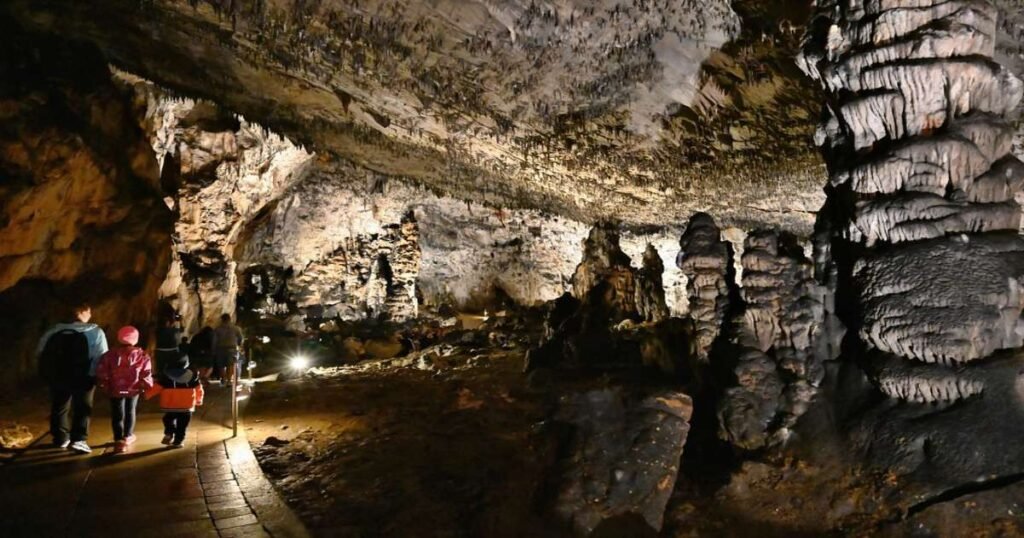
Aggtelek National Park, located in northeastern Hungary, is home to the Baradla Cave, one of Europe’s longest and most impressive limestone cave systems.
Historical and Cultural Significance: This UNESCO World Heritage site is an extensive karst landscape, famous for its stalactite and stalagmite formations. The park also plays a role in preserving Hungary’s biodiversity and geological heritage.
Unique Features: The Baradla Cave offers guided tours, where visitors can marvel at stunning formations, underground lakes, and unique mineral deposits. Adventure tours for deeper exploration are also available.
Best Time to Visit: Spring to early autumn; the cave maintains a constant temperature, making it a year-round attraction.
Travel Tips:
- Transportation: A car is recommended for convenience; buses are available from Miskolc.
- Accommodations: Stay in nearby villages with small guesthouses or eco-lodges.
- Local Customs: Respect conservation rules within the caves; flash photography is restricted to protect the formations.
15. Pannonhalma Archabbey
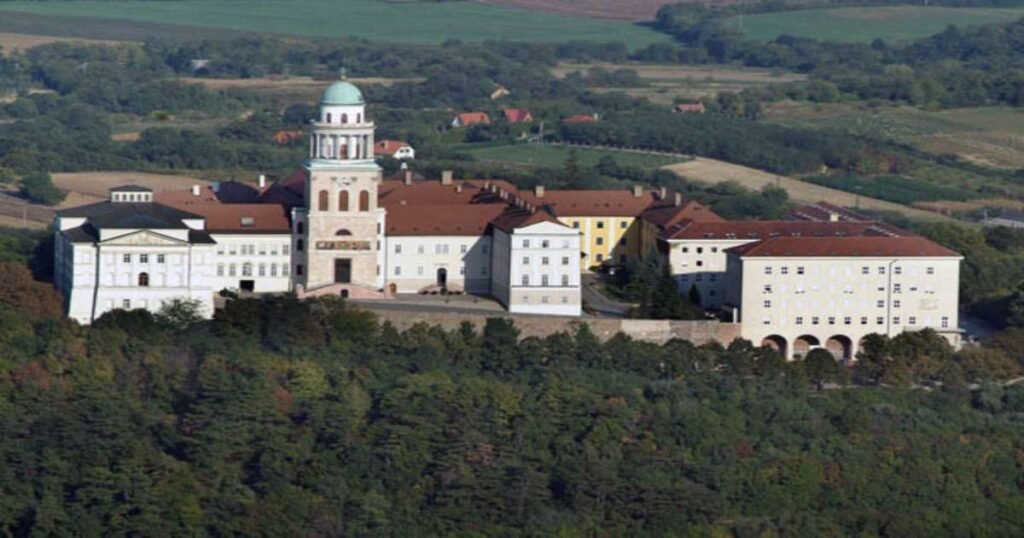
Pannonhalma Archabbey, a stunning Benedictine monastery in western Hungary, is one of the oldest historical monuments in the country.
Historical and Cultural Significance: Established in 996, the abbey has played a key role in Hungary’s religious and cultural history. The complex, a UNESCO World Heritage site, includes a 13th-century basilica, an extensive library, and a winery operated by the monks.
Unique Features: The abbey offers guided tours of the library, which contains thousands of manuscripts, and the tranquil lavender fields, where the monks produce essential oils and other herbal products.
Best Time to Visit: Late spring to early autumn when the lavender fields are in bloom.
Travel Tips:
- Transportation: Accessible by train or car from Győr or Budapest.
- Accommodations: Stay in nearby Győr for a wide range of hotels or at guesthouses closer to the abbey.
- Local Customs: The abbey is a place of worship, so modest attire and quiet demeanor are appreciated during visits.
Conclusion
Hungary is a country of profound beauty, filled with cultural treasures, historical landmarks, and vibrant landscapes.
Whether you’re exploring medieval castles, soaking in thermal baths, or hiking in national parks, Hungary offers a blend of experiences that captivate and inspire.
Embrace the spirit of Hungary, explore its traditions, and discover the soul of this fascinating country.
Also Read: Best 15 Tourist Attractions In Austria
FAQs
1. Is Hungary budget-friendly for travelers?
Yes, Hungary is relatively affordable compared to many European destinations. From accommodation to dining and attractions, there are options for all budgets.
2. What’s the best way to get around in Hungary?
Hungary has an efficient public transport system, especially in Budapest, where metros, trams, and buses are accessible. For more remote regions, car rentals or guided tours are recommended.
3. Are credit cards widely accepted in Hungary?
In major cities and tourist areas, credit cards are widely accepted. However, carrying some cash (Hungarian Forints) is recommended for smaller towns.
4. What are Hungary’s tipping customs?
Tipping is generally expected in restaurants, cafes, and for some services. Around 10-15% is customary if a service charge isn’t included.
5. What should I know about Hungarian cuisine?
Hungarian cuisine is flavorful and hearty, with dishes like goulash, lángos, and chimney cakes. Trying local specialties, especially in regions like Szeged and Tokaj, adds to the cultural experience.
6. What currency is used in Hungary?
Hungary uses the Hungarian Forint (HUF).
7. What languages are spoken in Hungary?
Hungarian is the official language, but English is widely understood in tourist areas.
8. Are thermal baths family-friendly?
Yes, many baths welcome families but check individual bath guidelines for specific rules.
9. How is public transportation in Hungary?
Public transport is efficient, especially in Budapest. Regional trains and buses also connect major towns.
10. What foods should I try in Hungary?
Don’t miss lángos and chimney cakes. Each region offers unique specialties worth exploring.

